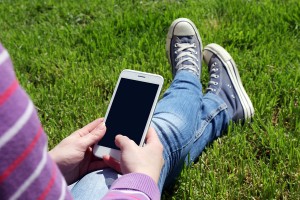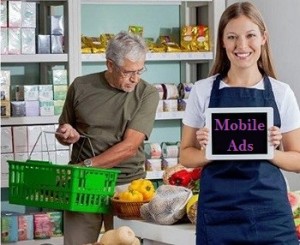The partnership has brought the two companies together for the Magnum ice cream app, using iBeacon.
Tesco has announced that it has entered into a partnership with Unilever in order to roll out geolocation technology in the form of iBeacons in 270 of its stores.
This location based tech will function to trigger exclusive savings opportunities and offers.
Through the use of geolocation technology, consumers who have downloaded and installed the Mpulse mobile app will receive offers and discount coupons whenever they pass within a certain distance of one of the participating Tesco locations. The iBeacons will be installed into the Tesco Express stores within the first rollout of this tech. It will become the largest trial of location based marketing that either of those massive brands has experienced.
The initial geolocation technology based campaign will trigger offers for the Black and Pink Magnum products.
 These push notifications will be sent automatically to passersby in order to give them the opportunity to take advantage of special deals that will remain valid from the time that they receive them until the end of the month. The Mpulse app is available for download at both the Apple App Store and the Google Play Store.
These push notifications will be sent automatically to passersby in order to give them the opportunity to take advantage of special deals that will remain valid from the time that they receive them until the end of the month. The Mpulse app is available for download at both the Apple App Store and the Google Play Store.
According to the global brand director at Magnum, Neil Gledhill, “We’re always looking at innovative ways to deliver on Magnum’s brand promise of delivering pleasure and to be able to do it at scale with a partner like Tesco is fantastic.”
The managing director at Tesco Convenience, Tony Reed, also went on to explain that they are always on the lookout to find new and engaging methods of encouraging their customers to return to shop while being able to take advantage of attractive offers at the same time. “With summer on the way, we’re delighted to trial this concept and can’t wait to get our customers’ feedback.”
The geolocation technology based mobile app was developed using Urban Airship tech, by the Karmarama agency. It functions in conjunction with iBeacons, which create a type of geofence around a specific location. Customers traveling within that designated area will receive the deals through their apps.
Within the first day of viewing, these smartphone advertisements generate considerable consumer response.
As mobile ads move from being in their early infancy toward the next phase in their maturity, many companies and marketers are still scrambling to try to find the right metrics to be able to measure their effectiveness.
A new report has now revealed that these smartphone and tablet ads can have a large affect on consumers.
The report was issued by NinthDecimal, a mobile intelligence firm based in San Francisco. What it revealed was that mobile ads that were having an impact on the behaviors of the consumers who saw them, and that this affect was on the rise. The study used data from 2014 in the second and fourth quarters . It measured advertisements displayed through Android and Apple apps, though not those that were displayed by way of web browsers. What was shown in The Mobile Audience Insights Report was that within the first day following the viewing of a mobile advertisement, there was an increase of 80 percent of in-store visits.
The report states that this helps to reveal more about the impact of mobile ads, which had previously gone unmeasured.
 In order to come to this conclusion, NinthDecimal both developed and used a Location Conversion Index, which it calls the first ever measurement of the real world behaviors that are the result of engagement over mobile advertisements. According to the company, it based its data on the results and actions of 1535 mobile users who were selected at random, on top of billions of different data points from campaigns that its clients ran on its platform.
In order to come to this conclusion, NinthDecimal both developed and used a Location Conversion Index, which it calls the first ever measurement of the real world behaviors that are the result of engagement over mobile advertisements. According to the company, it based its data on the results and actions of 1535 mobile users who were selected at random, on top of billions of different data points from campaigns that its clients ran on its platform.
What the outcome of the data analysis found, said the report, was that while the impact of mobile advertising can be a considerable one, it is not consistent from one industry to the next nor is it the same from one store to the next. Distance to the nearest store location also plays a role in the outcomes that were measured.
Interestingly, retail mobile ads, for example, were able to generate the greatest results for driving consumers into brick and mortar shops when those shoppers were already between 2 and 5 miles away from the store when they saw the ad. That represents a success rate that was 24 percent better than the average.
 These push notifications will be sent automatically to passersby in order to give them the opportunity to take advantage of special deals that will remain valid from the time that they receive them until the end of the month. The Mpulse app is available for download at both the Apple App Store and the Google Play Store.
These push notifications will be sent automatically to passersby in order to give them the opportunity to take advantage of special deals that will remain valid from the time that they receive them until the end of the month. The Mpulse app is available for download at both the Apple App Store and the Google Play Store.
 In order to come to this conclusion, NinthDecimal both developed and used a Location Conversion Index, which it calls the first ever measurement of the real world behaviors that are the result of engagement over mobile advertisements. According to the company, it based its data on the results and actions of 1535 mobile users who were selected at random, on top of billions of different data points from campaigns that its clients ran on its platform.
In order to come to this conclusion, NinthDecimal both developed and used a Location Conversion Index, which it calls the first ever measurement of the real world behaviors that are the result of engagement over mobile advertisements. According to the company, it based its data on the results and actions of 1535 mobile users who were selected at random, on top of billions of different data points from campaigns that its clients ran on its platform.